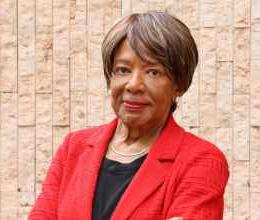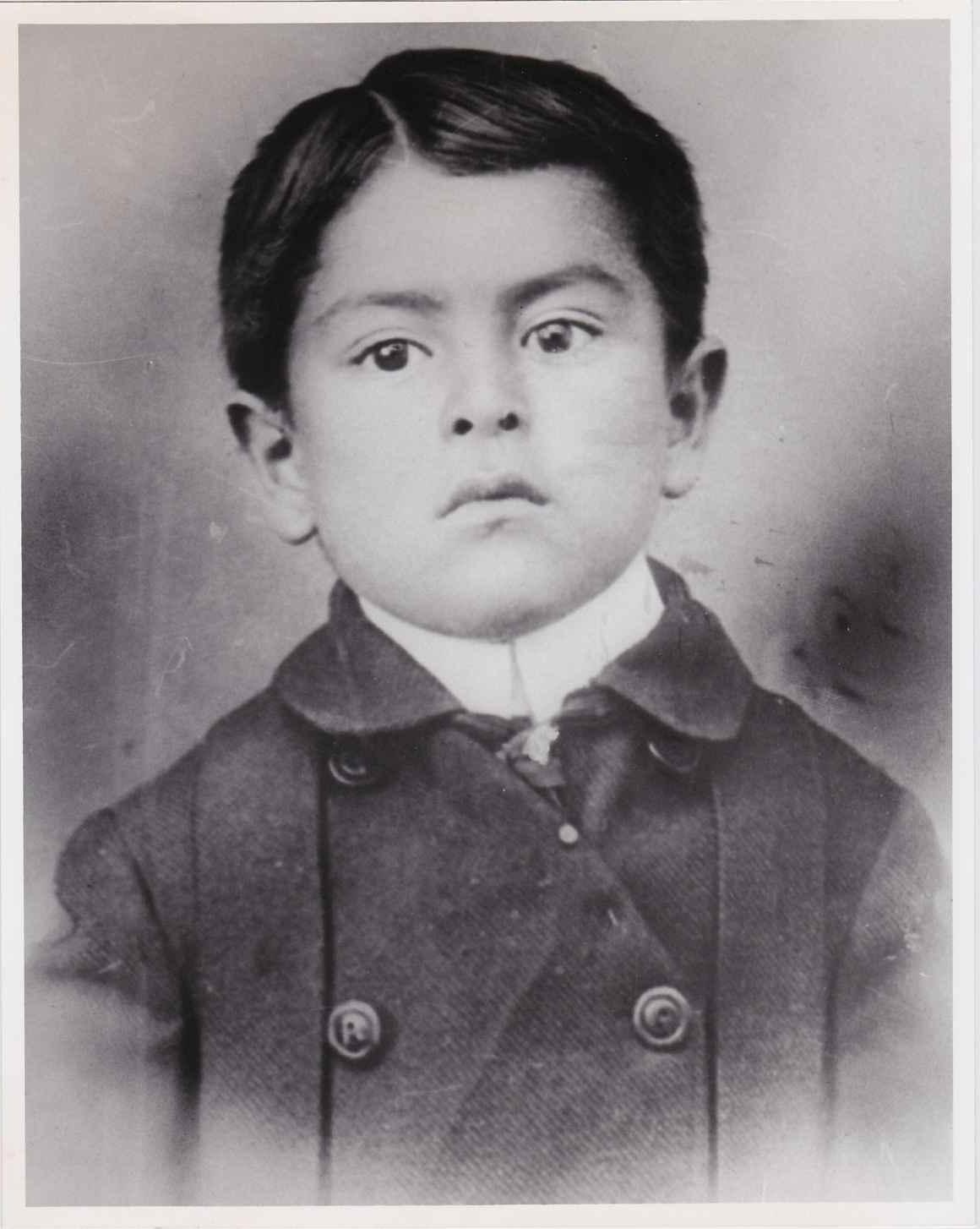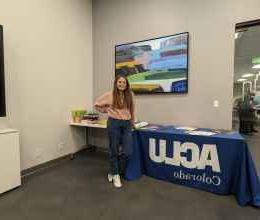
反思科罗拉多州在反学术歧视斗争中的作用
(节选自 Augustine E. Cordova. Listen here.)
|
En este cielo de sierra, |
在科罗拉多山上 |
In 1974, six Chicanx activists were killed in two distinct car bombings in Boulder, Colorado. 5月27日晚, 1974, Neva Romero, Reyes Martinez, 和乌纳·雅科拉在肖托夸公园的一次汽车爆炸中丧生. All three victims were either current students or alumni of the University of Colorado in Boulder (CU Boulder) and were heavily involved in the United Mexican American Students group (UMAS). At their UMAS追悼会 第二天, 弗洛伦西奥•格拉纳多于 spoke passionately about his friends and the injustice that occurred. 服务后不到24小时, 弗洛伦西奥•格拉纳多于, Heriberto Teran, 和弗朗西斯科·多尔蒂在5月29日的第二起汽车炸弹袭击中丧生. 安东尼奥·阿尔坎塔尔当晚也在车里,但他活了下来. Based on 执法调查记录; 没有人对杀害6名学生负责. 没有正义可言. “Los Seis de Boulder” is the name given to the two car bombings that took place 50 years ago under suspicious circumstances that remain unresolved.
在这场悲剧发生之前, the story of Los Seis de Boulder began at CU Boulder during the ‘60s and ‘70s, 这是全国民权革命的时代. 据历史学家说 Jason Romero Jr, the number of Mexican American students at CU Boulder sharply increased between the years 1968 and 1974. In less than 10 years, CU Boulder went from 50 to 1,400 Chicanx students, or an increase of 2,700%. The rapid increase came with many growing pains, but also new opportunities for Chicanx students. 在接受采访时 墨西哥裔和拉丁裔历史项目 Agustine Eliseo Cordova explained his experience on campus at this time: “It was beautiful because we had community. And we had to fight for everything that we got; it was kind of a double-edged sword.”
Naturally, CU Chicanxs organized and created UMAS to fight for their needs. 作为一个组织, UMAS专注于几个社会正义问题, 包括抗议越南战争, 校园种族多样性的必要性, 争取更好的经济援助, 结束警察暴行, 停止军队招募有色人种学生, 以及60年代出现的其他重要的社会话题.
It was this activism for basic student rights that got UMAS labelled as a dangerous and radical social group, and they were carefully watched by school administration and various law enforcement groups. UMAS was formed as an organization to help make CU Boulder a safe place for Chicanx students, 但它遭到了敌意, and ultimately, lethal violence.
Despite decades of organized student action and tragedies like “Los Seis de Boulder,“教育机构内部的不平等今天仍然存在. 在我们纪念《sbobet篮球》诞生50周年之际, Reyes Martinez, Una Jaakola, 弗洛伦西奥•格拉纳多于, Heriberto Teran, 和弗朗西斯科·多尔蒂在争取正义的斗争中被杀, I want to reflect on the larger history of educational inequities Chicanxs faced in Colorado. Based on my own personal experience as a Mexican American that grew up in Colorado, I know that important Latinx and Chicanx history continues to be neglected and racial tensions still exist within schools. 没人教过我Los Seis. 我从来没有听说过任何反对种族隔离的地方斗争. 我从来没有学过历史.
Rubén Donato 科罗拉多大学教育学院的教授, has researched Mexican Americans’ schooling experiences throughout American history. 从19世纪末开始, 他发现墨西哥裔美国人在学校不受欢迎, 被迫隔离, seen as intellectually inferior and expected to leave school at an early age. However, Mexican immigrants, Mexican Americans and people known historically as “Hispanos/as”, who were some of the first Spanish-speaking settlers in New Mexico and southern Colorado, resisted school segregation and were not passive victims who accepted their educational fates.
 |
|
The Maestas children had to walk through dangerous rail crossings in Alamosa on their way to their newly assigned school. 科罗拉多州2022.17.8 |
科罗拉多州的墨西哥裔美国人社区 几十年前挑战学校种族隔离 Brown v. 教育委员会 in 1954. In 1908, 阿拉莫萨学校董事会在小镇南边买了块地, 哪些董事会成员称其为“铁路的墨西哥一侧”,来建一所“墨西哥学校”.” The initial idea for the school was to provide language support for Spanish-speaking students, however, the district enacted a new policy under which all students with Spanish surnames were forced to attend the school, 不管他们的英语水平如何. After years of trying to work with the district to amicably end this segregation, 墨西哥社区聚集在一起,提起诉讼 Maestas v. Shone in 1914.
 |
|
米格尔·梅斯塔斯,诉讼中心的孩子之一. 照片由历史科罗拉多获得,由托尼·桑多瓦尔和博士. Ronald W. Maestas |
主要原告弗朗西斯科·马斯塔斯是米格尔·马斯塔斯的父亲. 他年幼的儿子所遭受的不公尤其残酷. 根据诉讼, Miguel Maestas was forced to walk past an English-speaking school to the Spanish language school, 沿途穿越几条危险的铁轨. 他们的律师在法庭上辩称, 不让孩子们上最近的学校, school officials were making a “distinction and classification of pupils in the public schools on account of race or color contrary to Article IX, Section 8, 科罗拉多宪法.” In 1914, a district judge in Alamosa County ruled favorably with the Maestas family and allowed the children of Alamosa to attend the school closest to their home.
This is one of the country’s first successful legal fights against school segregation, however, 在今后类似性质的案件中不引用它. 将近60年过去了,凯斯诉. School District 1 in Denver reaffirmed that segregation was illegal in Colorado schools — 这一决定与梅斯塔斯案及其胜利无关.
Advocacy was not a career choice for me; advocacy and organizing have been a means of survival for myself and my community. From my memory, the first time I witnessed collective power was in 2009 when I was attending a bilingual, 然而,表现不佳的, 博尔德小学. 为了解决我们考试成绩差的问题,学区想重新开始. This meant a new building, a new curriculum, a new principal, and a new staff.
The school organized to protect our teacher’s jobs and our bilingual curriculum. My parents advocated for my right to learn in the language I spoke and understood. 我看着当时10岁的弟弟向人群发表讲话, 包括校长, 捍卫我们最喜爱的老师. In the end, 我们的老师不用重新申请就能保住他们的工作, 但学校仍然经历了课程和物理变化. I finished elementary school without a playground because of construction and was kicked out of my advanced classes because of class capacity.
直到今天,我知道我的社区不会接受不公正. 我们将继续为学术公正而战, knowing that we stand on a strong foundation built by Black and Brown communities across the state.
科罗拉多州有着丰富的墨西哥裔美国人和墨西哥人的历史, and the ACLU of Colorado acknowledges the impact of that history in the fight for civil liberties in our state. 为了纪念那些在博尔德失去生命的人, 你可以通过捐赠来延续他们的遗产 罗志胜纪念奖学基金 which provides scholarships to undergraduate and graduate CU students enrolled in CU’s School of Education.
请注意:此链接将带您进入第三方网站.Edu,系统会提示您输入个人信息.
The 墨西哥裔和拉丁裔历史项目 has a robust collection of primary sources and oral histories of leaders in our Latine communities across the state. 最后,我想鼓励每一个有能力观看这部纪录片的人 “这不是我们是谁” which shares the story of the Black community living in Boulder and sheds light on the institutional racism rooted in the city.

